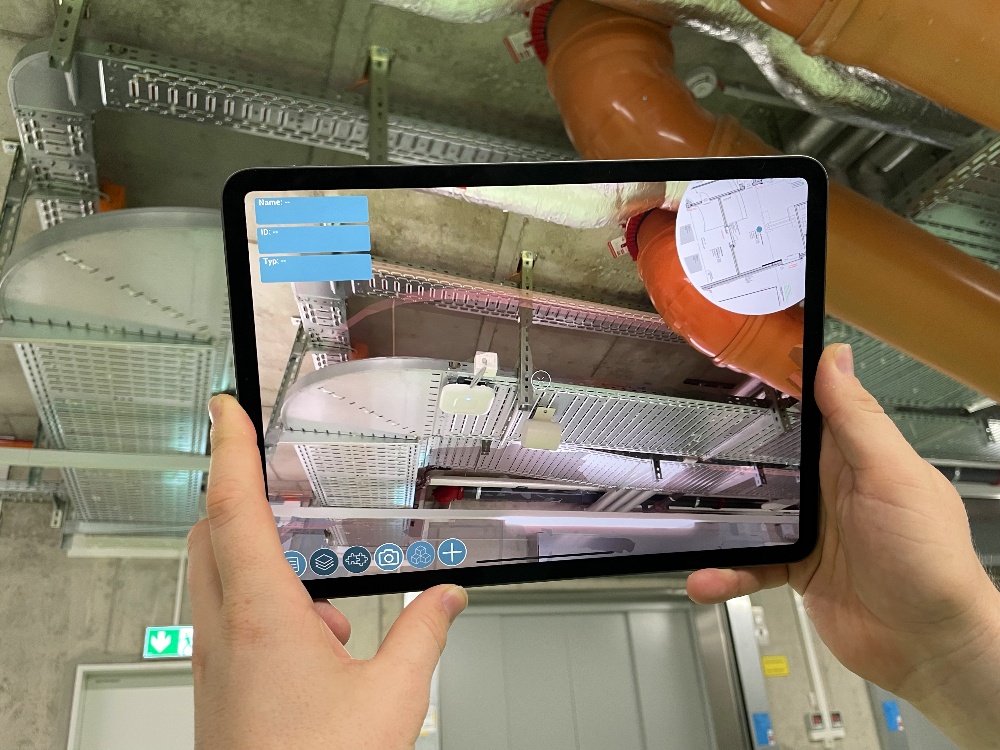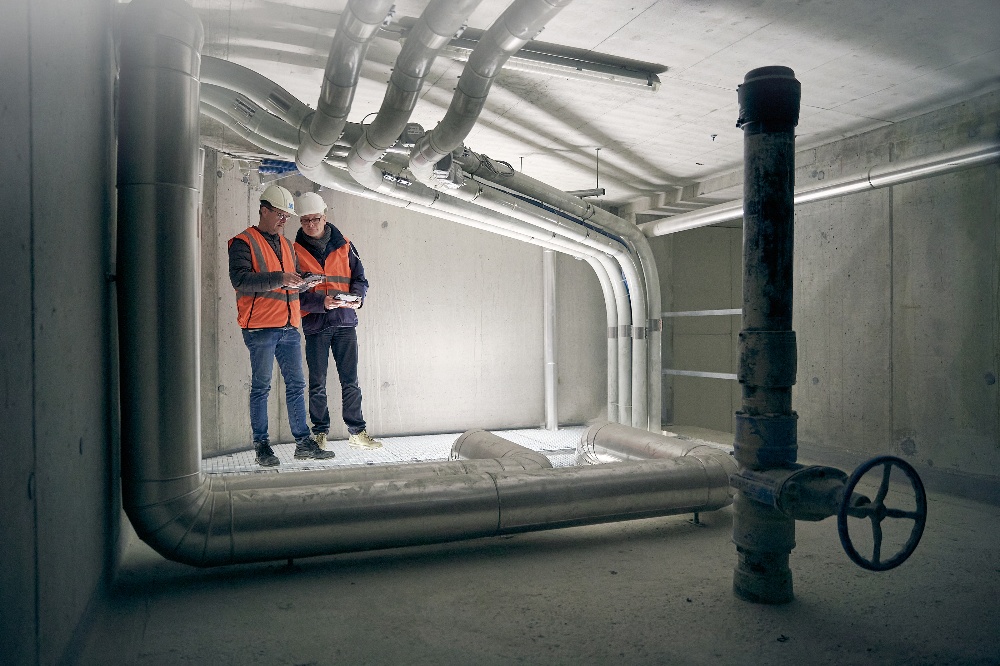Live comparison between construction activity and construction plans
Ergon's augmented reality (AR) solution allows 3D data to be superimposed on live camera images via smartphone or tablet. This makes it immediately clear whether plans and reality match.
 Ergon's augmented reality (AR) solution allows 3D data to be superimposed on live camera images via smartphone or tablet. This makes it immediately clear whether plans and reality match.
Ergon's augmented reality (AR) solution allows 3D data to be superimposed on live camera images via smartphone or tablet. This makes it immediately clear whether plans and reality match.
"With projects like this, we are contributing to the basis of AR technology, which will become increasingly prominent in the coming years. I find that enormously exciting," says Daniel Neubig, Senior Software Engineer and Head of AR.
For him, this moment is comparable to the introduction of the first smartphones: "Back then, people tried to replicate familiar scenarios with the smartphone instead of breaking new ground." Interestingly, however, it is not AR headsets that are currently the enablers, but the current generation of smartphones or tablets that carry the visualization of data into everyday life - partly because the headsets are still expensive and take a long time to boot up. Via cell phone, on the other hand, virtual layers can already be added to reality with a click.
The basis for this is what is known as Building Information Modeling (BIM). Here, construction plans are displayed in 3D, which until now was only a solution for the office or for architects and civil engineers, whereas the computing power for active use on the construction site by subcontractors was lacking.
Ergon bridges the gap here: The AR data simply needs to be uploaded to the mobile device beforehand - and the construction plans can be compared live with the construction progress, independent of local connectivity or further hardware.
Tinkering and interest
"The decisive factor was the combination of tinkering and early interest," says Neubig - or, to put it another way, Ergon's own corporate culture. "The fact that we are now able to offer AR with business benefits for customers can be traced back to the initiative of some employees, coupled with individual training budgets that everyone can freely dispose of," he continues. Four years ago, the company began to build up the necessary skills in-house. Individual employees made the start, then informed colleagues, and the whole thing finally condensed into a focus group. "After the first prototypes, it was clear that we could create added value with this technology and actively approach customers," says Neubig.
With the construction industry, which is still not very digitized, they most recently had a customer with complex requirements, because in construction the environmental conditions are harsh and constantly changing, which makes it difficult to answer two central questions: Where am I? Which direction am I looking? The AR team had to test different approaches on site: "We tested sensors on the feet or even beacon networks. That wasn't ideal," says Neubig. GPS and WLAN were also not reliable enough. The solution was found in a combination of blueprints and "corner-related" mathematics. Room corners are always the intersection of three planes and can be precisely related mathematically to the user's position. The user simply marks his position on a 2D map beforehand, indicates the viewing direction and films the relevant corner. The alignment can then begin.

The next generation of the Internet
Ergon has applied for a patent for the process. According to Neubig, however, this is still only the beginning for AR: "There used to be paper price tags in the supermarket, which have now been digitized. With AR, in the future we'll be able to see what ingredients are there and much more."
But that's just one element - as the AR-based new level of reality aims to learn from the mistakes of the web and mobile revolutions. "We discuss a lot about data security and privacy. Who is the owner? How is it monetized and by whom? We can collaborate now on what will be in the future, because there is no legal basis yet." Thinking ahead is key because the nature of this data is different: With an app, often only one type of data is requested - an image or a restaurant visit. With AR glasses, everything is in one place: 7 cameras film the environment and you - even where you're looking can be pinpointed; plus GPS and interaction. Data aggregation takes place on a single platform. As a result, the data is more powerful and careful handling is more important than ever. Thus, Neubig emphasizes, "We don't just build solutions. We are participating in the dialog about the possibilities of the next generation of the Internet."
Techtalk:
We work with ARKit from Apple or Microsoft's Mixed Reality Toolkit. Mostly, however, we rely on cross-platform solutions such as AR Foundation from Unity or OpenXR from Khronos. Unity in particular was an advantage here, as the game engine takes a lot off our plate in terms of lighting, rendering, physics or 3D scenes. With AR headsets, we can also work with anything; but the great thing is the maturity of tablets and smartphones - they carry AR everywhere.
>Table of contents show detail hide detail
- Index: >Details
- Editorial: What do developers think? >Details
- Basic Information >Details
- Insights, findings & excerpts >Details
- Developer Profile >Details
- How we do tech - Ergon >Details
- Programming, scripting and markup languages >Details
- How we do tech - adesso >Details
- Frameworks, libraries and tools >Details
- Covid-19 Impact in IT >Details
- Databases >Details
- Platforms >Details
- Preferences and tools >Details
- Carreer Aims + Opportunities >Details
- Ethics & Technology Trends >Details